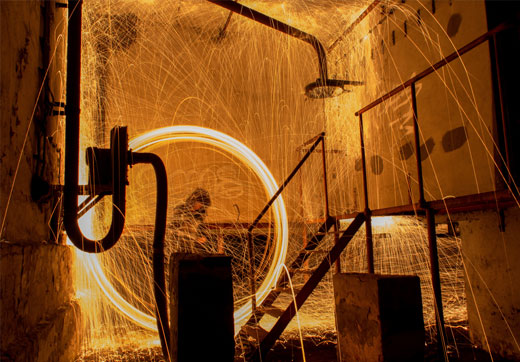
Outsource of Graphite Machine Work From Metal Shops
Buy Graphite?
Sometimes, metal machining shops receive orders for graphite components. If the metal shop buys from graphite sources and machines the graphite themselves, some problems may occur. We explain here why it’s often a bad idea to buy graphite and machine it on equipment meant for machining metal, and why graphite machining is best done on proper equipment by experts in carbon materials.
Graphite Sources
From the outside, metal machining shops and graphite machining shops are similar. For instance, both use CNC machines that can cut these materials into virtually any shape. However, in metal machining, cutting fluids are frequently used, while in graphite machining they are not. Cutting fluids are liquid coolants that keep the metal being worked from overheating. This cooling is crucial for precision machining of metal, especially when, for instance, tolerancing margins are tight. Sometimes, a metal shop will need a graphite component and, not being familiar with the particular properties of graphite, decide to do the graphite machining themselves.
Graphite Machining
A better idea would be to outsource this graphite machining work to graphite experts like Semco. If the metal shop proceeds to buy graphite and machine it themselves, here are some things that can go wrong:
- The graphite could be ruined. The cutting fluid used in the metal machining process can contaminate graphite, rendering it unusable for the desired application. Graphite can withstand very high temperatures without losing its shape and essential properties (hence its use in furnaces, crucibles, and heating elements) and thus does not require a continuous cooling source as it is being machined, as do many metals. And unlike metals, graphite is quite porous and will soak up cutting fluids like a sponge.
- The coolant may become contaminated. Graphite machining produces dust that, in a properly equipped shop, is captured by an air filtration system designed for the purpose. In a metal machining shop, this uncaptured dust would mix with the coolant in a contaminated slurry that would need to be discarded.
- Recycling of waste materials is compromised. In a graphite machining shop, the graphite dust sucked out by the air filtration system is deposited in giant bags called super sacks and ultimately recycled. Recycling waste materials is part of any green initiative, but the recycling of graphite dust is impossible once it mixes with a liquid coolant.
- The graphite could be improperly machined. Some metals, especially cast iron, do not require a cutting fluid when machined. Machining graphite on equipment used to machine cast iron may appear tempting since no contaminating coolant would be introduced into the process. In addition, the precision of CNC tools may take the worry out of machining a different material. One could be forgiven for thinking that as long as the router cuts the material, the CNC tool will produce an accurate cut. But like any material, graphite has its idiosyncrasies. Machinists experienced in working with carbon materials understand the nuances of the material, which the machinist used to working with metals haven’t experienced. The end result of machining graphite on metal- working equipment by a metal-working expert might be a flawed graphite component.
At Semco, we highly recommend that if metal shops receive orders for graphite components, they outsource the machining of those components to graphite experts. Materials can be conserved and properly recycled, the idiosyncrasies of the material can be managed to ensure manufacturing accuracy, and the customer gets precisely the component they need.
